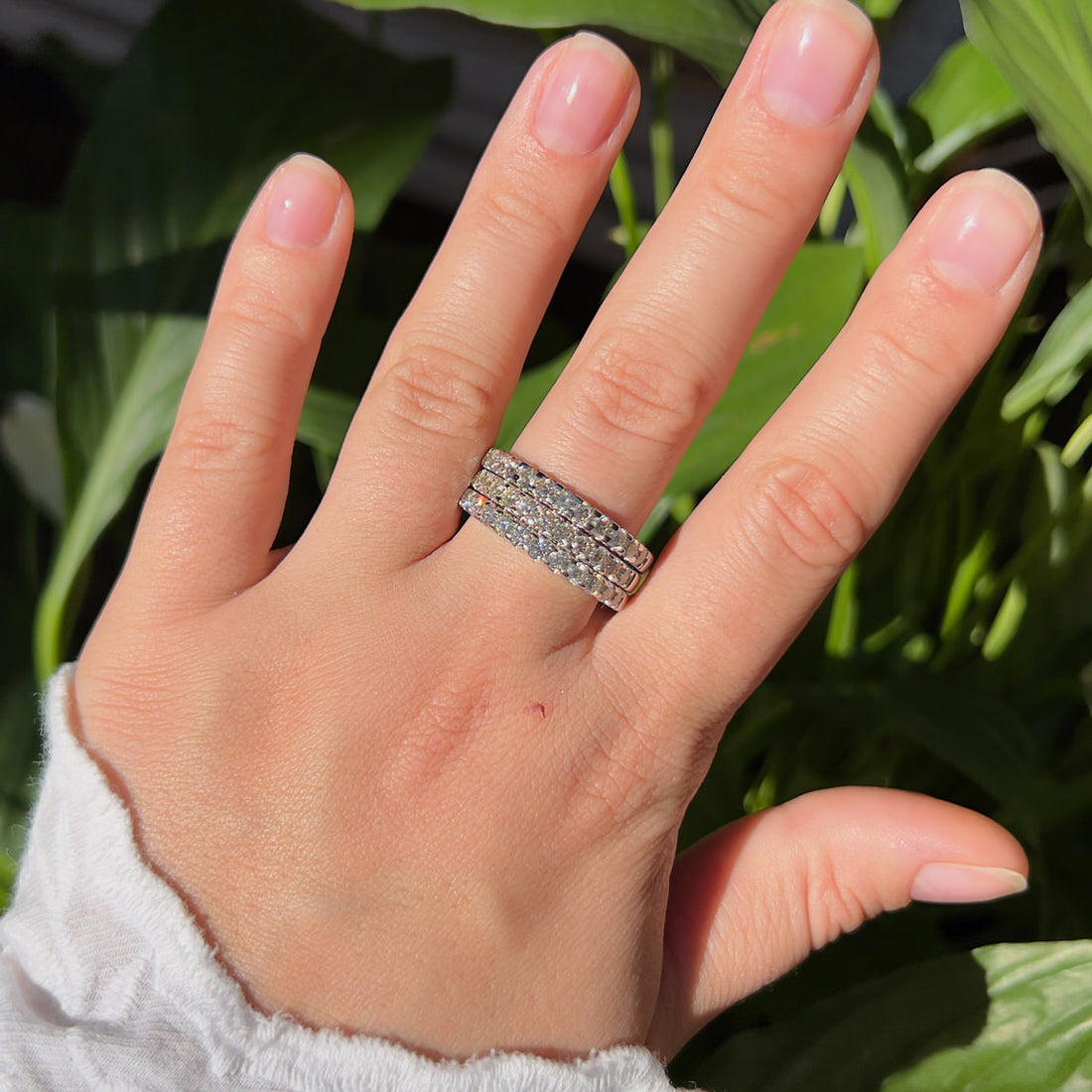
The Fascinating History of Wedding Bands: From Ancient Times to Modern Day
Share

The wedding band is one of the most significant pieces of jewelry a person will ever wear. It represents the commitment and love between two people, and is often worn every day for the rest of their lives. But where did the tradition of the wedding band come from, and how has it evolved over time? In this article, we'll explore the fascinating history of wedding bands, from ancient times to modern day.
Ancient Egypt
The tradition of exchanging rings as a symbol of marriage dates back to ancient Egypt, where they were crafted from woven reeds or braided papyrus. These rings were worn on the fourth finger of the left hand, which was believed to have a vein that led straight to the heart. This belief, known as the "vein of love," is still upheld today.
Ancient Rome
The Romans also adopted the tradition of exchanging rings during marriage ceremonies, but their rings were typically made of iron. The metal was chosen for its durability and symbolic strength, and the rings were worn on the left hand to signify the binding of the heart. Later on, more precious metals like gold and silver became popular, and engravings and gemstones were added to the rings to make them more ornate.
Middle Ages
During the Middle Ages, wedding bands became more elaborate and decorative, featuring intricate designs and religious symbols. Rings were often inscribed with phrases like "amor vincit omnia" (love conquers all) or "in thy breast my heart doth rest." It was also during this time that the concept of engagement rings emerged, with a man presenting a woman with a ring as a promise of marriage.
Renaissance
The Renaissance saw a revival of classical art and culture, and wedding bands became more elaborate and ornate than ever before. The rings were often designed in the shape of snakes, which symbolized eternal love, and they were often studded with gemstones. Engraving techniques became more advanced, allowing for more detailed and intricate designs.
Victorian Era
During the Victorian era, sentimentality and symbolism were paramount in jewelry design. Wedding bands were often inscribed with romantic phrases and adorned with symbols like hearts and flowers. They were also frequently crafted in the shape of a snake, a symbol of eternal love that dates back to ancient times. This era also saw the rise of diamonds as a popular gemstone for engagement rings, thanks in part to a marketing campaign by the De Beers diamond company.
Modern Era
In the 20th century, wedding bands became simpler and more streamlined in design, reflecting the modernist aesthetic of the era. Platinum became a popular metal for wedding bands, thanks to its durability and luster. Diamond wedding bands also became more popular, with many couples opting for a matching set of diamond-studded rings.
Today, wedding bands are available in a wide range of styles and designs, from traditional gold bands to more contemporary diamond-studded rings. Some couples opt for engraved bands, while others choose to customize their rings with unique designs or personal touches.
Conclusion
The history of the wedding band is a fascinating one, spanning thousands of years and numerous cultures. From ancient Egyptian reeds to modern-day diamond-studded rings, the wedding band has evolved and changed over time, but its significance as a symbol of love and commitment remains the same. Whether you prefer a traditional gold band or a modern diamond-studded ring, the wedding band is a timeless symbol of love and partnership that will continue to endure for centuries to come.
